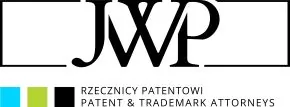Patents are granted to inventions which meet patentability requirements. The notion of industrial application is defined in the Polish Industrial Property Law. The notion is also used in international conventions and European law regarding the subject of industrial property as it is broadly understood, alongside such notions as novelty and inventive step.
In accordance with Art. 24 of the Industrial Property Act, patents are granted – regardless of the field of technology – to inventions which are new, which involve an inventive step and which are susceptible of industrial application.
Art. 27 stipulates that an invention is deemed susceptible of industrial application if, by means of that invention, a product may be produced or a process may be used, in a technical sense, in any kind of industry, including in agriculture.
According to the Polish Patent Office's guidelines, an invention is susceptible of industrial application, when 'it can be used (implemented) repeatedly with identical effect'. Industrial applicability also involves such partial requirements as completeness, usability (socially useful), repeatability of the result (effect) and an appropriate disclosure of the invention, which was emphasized in a decision of the Provincial Administrative Court.
Industrial applicability, as one of the conditions for patentability, is one of the categories which may be objectively verified by making an attempt to 'implement the invention in practice'. The industrial application condition is interpreted by the Patent Office's experts on a case by case basis, depending on the field of classification of the invention.
The completeness requirement has been defined in decision no. 2059/04 issued by the Provincial Administrative Court in Warsaw as follows: 'A solution is applicable if it is complete, i.e. it allows the result to be achieved without the need for any additional solutions other than standard adaptive measures.'
In practice, in the area of inventions protection is granted only to such products which may be used at any time, i.e. material products. Industrial applicability in the technical sense requires that the invention should be useful, which means that patent will not be granted if, at the date of filing, the application fails to indicate the issue to which the invention will be applied. Such indication must be supported by examples from the broadly understood patent documentation.
Appropriate disclosure is a very complex task which requires the patent attorney to have substantial experience in drawing up patent documentation. On the one hand, the experts at the Patent Office may make claims as to the so-called 'vagueness of the invention', which must be addressed; on the other hand, the patent attorney should always bear in mind the client's interests.
Sufficient disclosure is defined in the Industrial Property Law, in Art. 49(1)(2): 'If the Patent Office finds that the invention has not been sufficiently disclosed, it will issue a decision to refuse to grant the patent.' Undue disclosure may constitute grounds for invalidating the patent under Art. 89(1)(2) of the Industrial Property Law, which stipulates that 'a patent may be declared invalid in whole or in part at the request of any person having a legitimate interest therein, who is able to prove that the invention was not presented clearly and exhaustively enough for a person skilled in the art to realize it.'
However, in accordance with decision no. 112/08 of 9 May 2008 of the Provincial Administrative Court in Warsaw, 'the applicant does not have to present the best idea of realizing the invention known to him or her'. Therefore it would be sufficient to apply it on the basis of the description, even if such an application were to be negligible or unsound economically.
It is worth noting that legislators have also established criteria for industrial applicability of biotechnological inventions. They are found in Art. 93(2)(3) of the Industrial Property Law: 'In order to meet the industrial applicability criteria in the case of using a sequence or partial sequence of a gene to produce protein or part of protein, the description of the invention shall specify which protein or which part of it is produced and what role it plays.' In its decision no. 1474/04, the Provincial Administrative Court in Warsaw stated that it is not sufficient to produce a new chemical compound without indicating the purpose of its use in industry. Since usefulness is part of the essence of what an invention is, information concerning usefulness must be provided in the application on the day of its filing. In particular, the very fact of obtaining a new compound does not fulfil the criteria for industrial applicability and is nothing more than an addition to chemical diversity.
A patent attorney is faced with the challenge of proving not only that an invention meets the criteria of novelty and an inventive step, but also that it fulfils the requirements of having industrial applicability and being of a technical nature. Compiling suitable patent documentation and enforcing the clients' rights requires very good knowledge of the technological area of the invention as well as legal regulations and case law.
Originally published 15 November 2019
The content of this article is intended to provide a general guide to the subject matter. Specialist advice should be sought about your specific circumstances.

